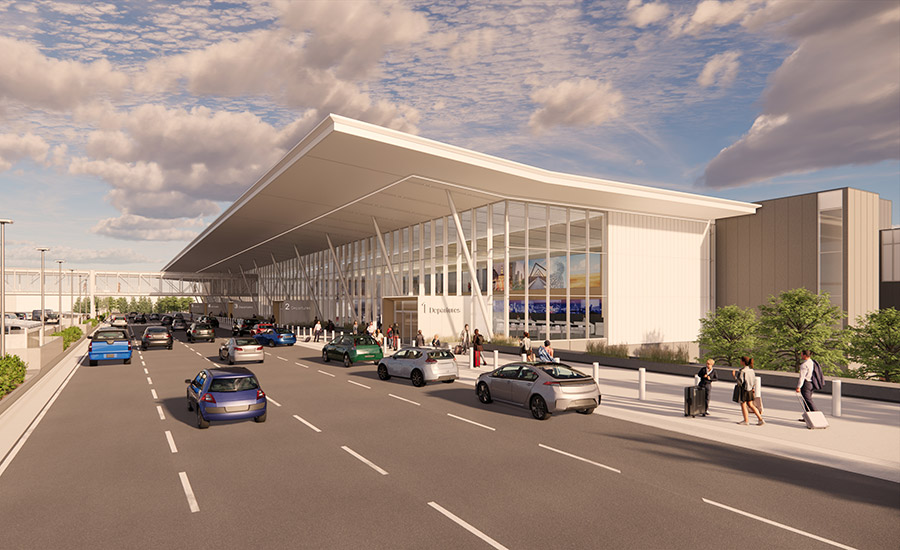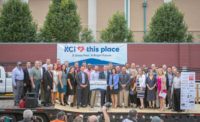Voters approved issuing $350 million in bonds Nov. 7 to replace the existing 1940s-era terminal at the Des Moines International Airport, according to unofficial vote tallies.
The proceeds from the bond sale will fund part of the first phase of construction on the $770 million project.
“We are eager to move forward with this financial support, and we are committed to using these funds wisely to enhance the travel experience and expand our airport’s services,” said Kevin Foley, executive director of the Des Moines Airport Authority, in a news release.
The Weitz Company, in a joint venture with Turner Construction, will lead construction of Phase 1A of the project. Construction began in October with site preparation.
Phase 1A of the new terminal building covers a 265,000-sq-ft expansion that includes ticketing, outbound/inbound baggage handling and screening, security, offices, a pedestrian bridge connecting to the new parking garage, a new concourse with rooms for five new gates, support areas and a connection to the existing concourse. The additional gates will accommodate larger aircrafts, expanding the airport’s overall passenger capacity with a new meet-and-greet space, concessions and other amenities.
As ENR reported previously, Kansas City, Mo.-based HNTB is designing the project. Sixty percent of the design is slated to be completed this month, with 100 percent completed by April 24 when construction of the terminal is scheduled to begin.
When complete, the terminal will have 17 gates plus eight remote aircraft parking spots to accommodate rising passenger traffic, up from the current 12 gates.
The airport is the largest in Iowa. Its current 12-gate terminal building dates to 1948, and the airport is projecting demand for 17 gates by 2032 and for 19 by 2042. The airport authority's plans also call for a three-phase project to break up costs and allow the first phase of work to fit available funding.
Tom Rossbach, HNTB’s aviation architecture senior director and project manager for the Des Moines airport contract, said in a statement that he expects the design “will be transformational in terms of passenger experience, efficiency and flexibility.”
The first portion of the expansion is slated to completed in 2026 and all three phases by early 2030.





